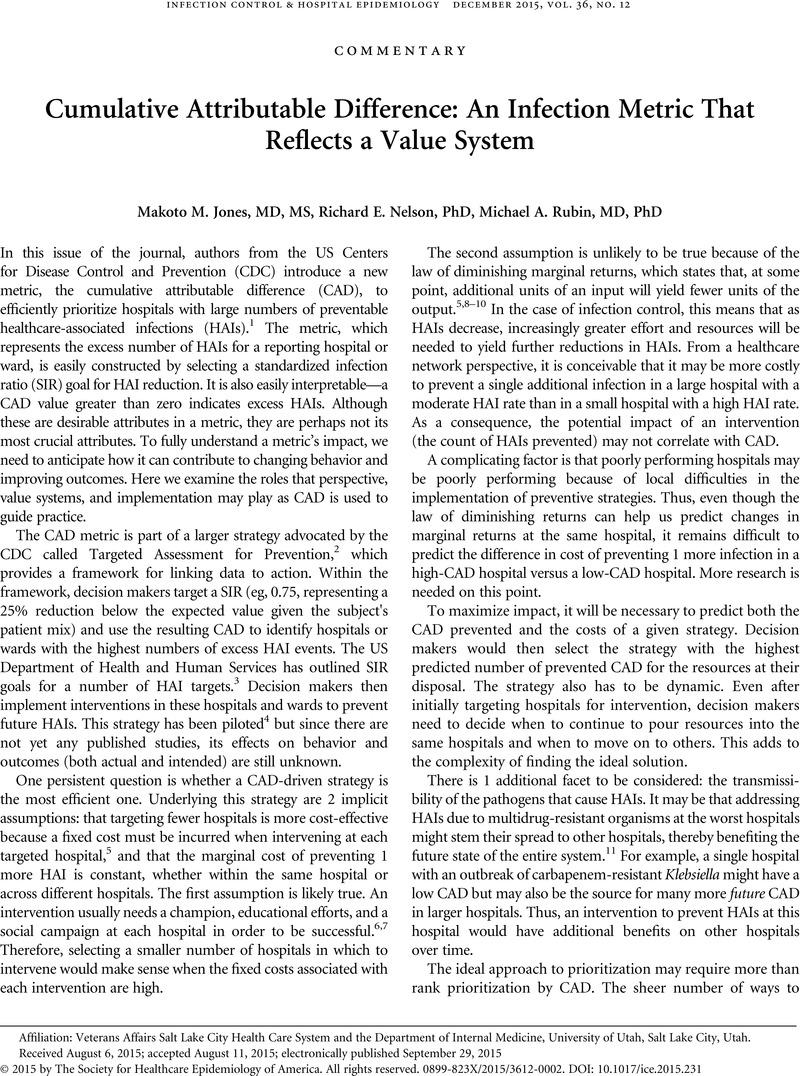Crossref Citations
This article has been cited by the following publications. This list is generated based on data provided by Crossref.
Soe, Minn M.
Gould, Carolyn V.
Pollock, Daniel
and
Edwards, Jonathan
2015.
Reply to Jones et al.
Infection Control & Hospital Epidemiology,
Vol. 36,
Issue. 12,
p.
1477.
Birnbaum, David
and
Decker, Michael
2016.
Halfway to salvation, or halfway to hell?.
International Journal of Health Governance,
Vol. 21,
Issue. 3,
p.
106.
McGowan, John E.
2016.
The 2016 Garrod Lecture: The role of the healthcare epidemiologist in antimicrobial chemotherapy—a view from the USA.
Journal of Antimicrobial Chemotherapy,
Vol. 71,
Issue. 9,
p.
2370.


